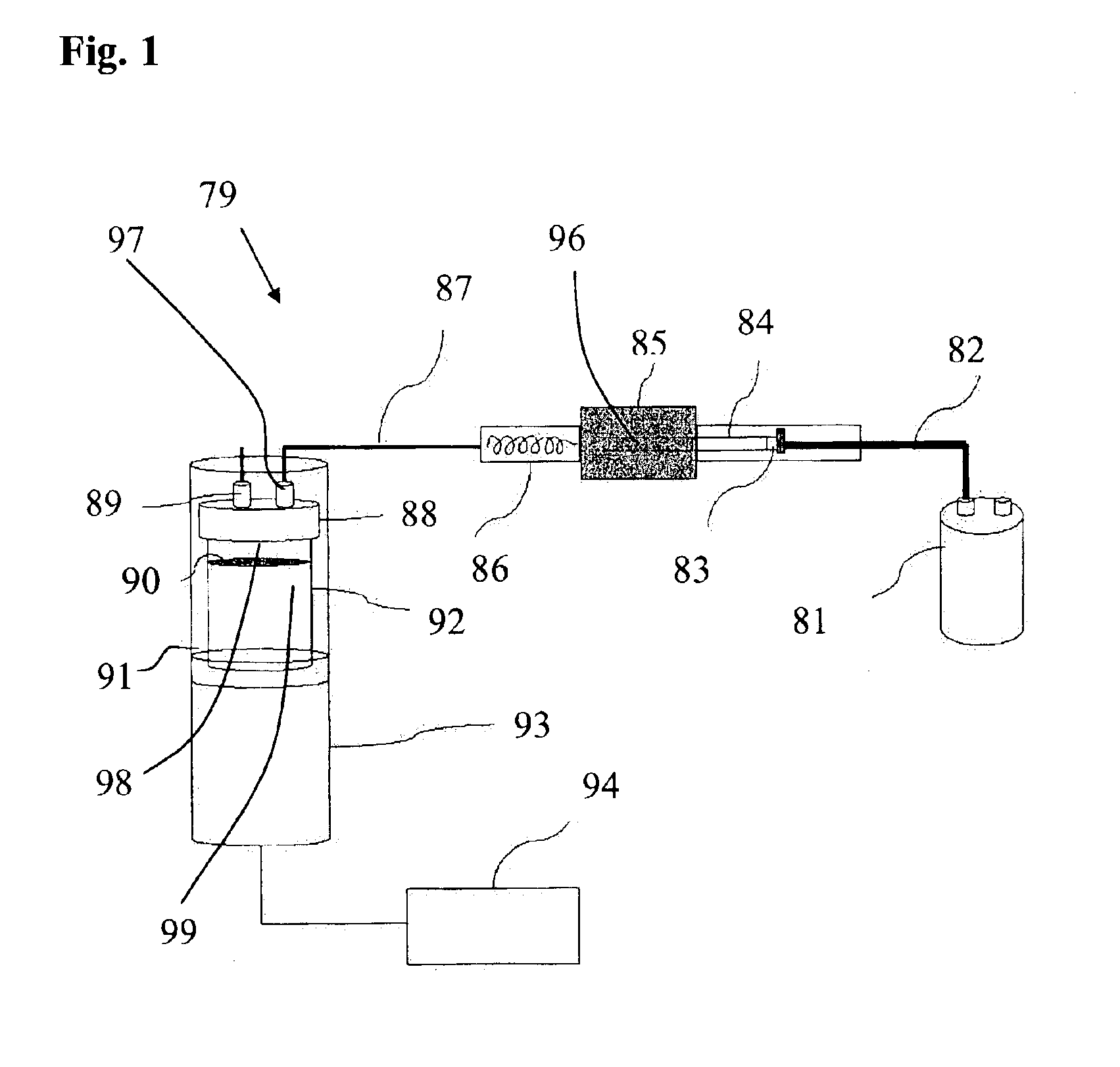Multi-modal detection of explosives, narcotics, and other chemical substances
a multi-modal detection and explosive technology, applied in the field of scanners, can solve the problems of slow, cumbersome, laborious, and inconvenient screening of cargo, especially in the context of air and rail transportation, and achieve the effects of improving the detection accuracy, reducing the cost of detection, and improving the detection accuracy
- Summary
- Abstract
- Description
- Claims
- Application Information
AI Technical Summary
Benefits of technology
Problems solved by technology
Method used
Image
Examples
example 1
[0093]The efficacy of the luminol reaction for the detection of minute amounts of NO2 was tested. Flowing, ambient laboratory air was supplied to a dilution / mixing chamber at a controlled pressure and flow rate. A small amount of NO2 from a gas cylinder was alternately added or not so as to provide a test gas that alternately contained or did not contain NO2 at 10 parts per billion (ppb) concentration. The test gas then passed into a reaction cell containing a piece of filter paper saturated with an alkaline, aqueous 10−3 M luminol solution that further contained 1.0 M KOH and 10−1 M Na2SO3. Light produced by the chemiluminescent reaction of the luminol and any NO2 present was detected using an Electron Tubes Inc. Model P10232 commercial light detector. The unit comprised a photomultiplier tube, a high voltage power supply, a high speed amplifier-discriminator, and an embedded microcontroller. The number of counts registered by the PMT system per 50 ms increment was recorded continu...
example 2
[0094]An experiment similar to that of Example 1 was carried out to demonstrate the detectability of the common taggant DMNB. In this case, a collection tube containing Tenax GC adsorbent was connected to a vacuum at one end to draw in a test gas which entered at the other end. The test gas, composed of laboratory air and 100 parts per trillion (ppt) of DMNB, was prepared with the same dilution system used in carrying out Example 1. The exposed collection tube, containing preconcentrated DMNB adsorbed from the above exposure was then connected at one end to a source of flowing air and at the other end to a pyrolyzer tube containing a Pt—Rh alloy wire that could be electrically heated. The collection tube was placed in a heater chamber to desorb the DMNB which was swept by the carrier gas into the pyrolyzer tube. The Pt—Rh wire was pulse heated to about 700° C. to pyrolyze the DMNB to produce NO2 which was subsequently swept into a reaction cell containing a piece of filter paper sat...
example 3
[0097]The experiment carried out in Example 2 was repeated using DMNB present at a series of different concentrations. FIG. 6 depicts the results of these experiments, traces 112, 114, 116, and 118 in FIG. 6 representing, respectively, concentrations of 100, 200, 500, and 1000 ppt (1 ppb), respectively. The presence of DMNB is clearly detectable at each of the concentrations, as signaled by an integrated photon count significantly over background that increased with increasing DMNB concentration.
PUM
| Property | Measurement | Unit |
|---|---|---|
| temperature | aaaaa | aaaaa |
| temperature | aaaaa | aaaaa |
| wavelength | aaaaa | aaaaa |
Abstract
Description
Claims
Application Information
 Login to View More
Login to View More - R&D
- Intellectual Property
- Life Sciences
- Materials
- Tech Scout
- Unparalleled Data Quality
- Higher Quality Content
- 60% Fewer Hallucinations
Browse by: Latest US Patents, China's latest patents, Technical Efficacy Thesaurus, Application Domain, Technology Topic, Popular Technical Reports.
© 2025 PatSnap. All rights reserved.Legal|Privacy policy|Modern Slavery Act Transparency Statement|Sitemap|About US| Contact US: help@patsnap.com



